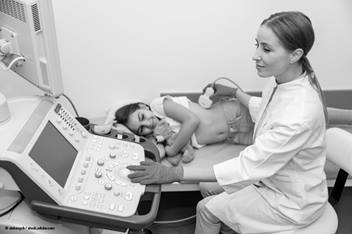Dialysis

Nationwide Children’s has a pediatric-specific dialysis unit on-site to provide acute and chronic dialysis therapy for children with severe kidney failure. Hemodialysis, peritoneal dialysis and continuous renal replacement therapy are available depending on the patient’s need. All chronic dialysis patients are taken care of by a multidisciplinary team including a primary nephrologist, primary dialysis nurse, pediatric surgeon, pediatric interventional radiologist, dietitian, social worker, psychologist, teacher and massage therapist.
What is dialysis?
Dialysis is a procedure that is performed routinely on people who suffer from acute or chronic renal failure. The process involves removing waste substances and fluid from the blood that are normally eliminated by the kidneys. Dialysis may also be used for individuals who have been exposed to or ingested toxic substances to prevent renal failure from occurring. There are two types of dialysis that may be performed on your child: peritoneal or hemodialysis:
Peritoneal dialysis
Peritoneal dialysis is performed by surgically placing a special, soft, hollow tube into your child's lower abdomen near the navel. After the tube is placed, a special solution called dialysate is instilled into the peritoneal cavity. The peritoneal cavity is the space in the abdomen that houses the organs and is lined by two special membrane layers called the peritoneum. The dialysate is left in the abdomen for a designated period of time that will be determined by your child's doctor. The dialysate fluid absorbs the waste products and toxins through the peritoneum. The fluid is then drained from the abdomen, measured, and discarded. There are two different types of peritoneal dialysis: continuous ambulatory peritoneal dialysis (CAPD) and continuous cyclic peritoneal dialysis (CCPD):
-
CAPD does not require a machine. Exchanges, often referred to as passes, can be done three to five times a day, during waking hours.
-
CCPD requires the use of a special dialysis machine that can be used in the home. This type of dialysis is done automatically, even while your child is asleep.
Hemodialysis
Hemodialysis is performed in a dialysis center or hospital by trained health care professionals. A special type of access, called an arteriovenous (AV) fistula, is placed surgically, usually, in your child's arm. This involves joining an artery and a vein together. An external, central, intravenous (IV) catheter may also be inserted, but is less common for long-term dialysis. After access has been established, your child will be connected to a large hemodialysis machine that drains your child's blood, bathes it in a special dialysate solution that removes waste substances and fluid, then returns it to your child's bloodstream. Hemodialysis is usually performed several times a week and lasts for four to five hours. Because of the length of time hemodialysis takes, it may be helpful to bring games or reading materials for your child to occupy him or her during this procedure. A teacher may be available to work with your child during part of the treatment.



